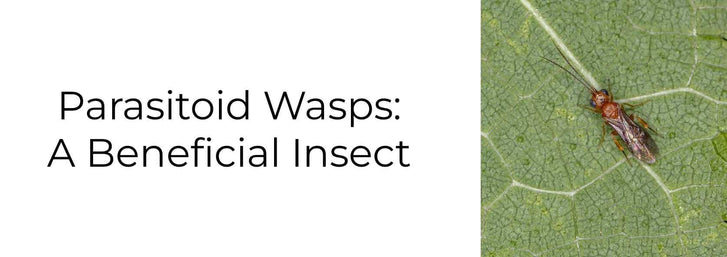
Kat Jones

Eighteen percent of American women and six percent of American men suffer from migraines. Magnesium and trace minerals may help with this and other health disorders.
Unbeknownst to a surprisingly large audience of nutritionally uneducated Americans, insufficient mineral density in the food we eat is a major contributor to disease and dysfunction. This silently growing deficit has not resulted from a quantitative problem, as there is rarely a recognizable food shortage in this country, but rather a qualitative one. Trace elements and minerals are most prevalent in fresh produce and other organic food sources, not synthesized and manufactured foods. Unfortunately for health-conscious Americans, especially those trying to avoid a migraine headache, even the supposedly nutrient-dense food items have been diluted by profit-driven farming techniques. Limited crop rotations, genetic modifications, and over-planting of crops have sapped the trace minerals from these foods.
The proportion of benevolent trace elements such as magnesium, chromium, manganese, and zinc in our food is directly correlated to the mineral density of the soil that it comes from. The aforementioned farming practices draw these already scarce minerals from the soil before they can enrich the food with migraine headache-preventing properties. Consequently, even consuming what we think are nutrient-dense foods can leave us with nutritional deficiencies, which are especially detrimental to growing children, the elderly, and people who are already sick. To prevent a migraine headache, chronic fatigue, and the host of other maladies that accompany a deficiency of trace minerals, everyone is now recommended to start a trace elements supplementation regiment.
Trace elements and minerals are most sensibly conceived as the smallest building units that compose a larger body. While it's much easier to solely credit organs, bones, sinew, blood, and so on with the construction of the human body. None of these systems would operate without being facilitated by trace elements. Enzymic transactions, neurotransmitter function, and cellular nourishment are all working at the ground level to build and maintain these larger tissue-based structures while preventing the migraine headache, major diseases, and excessive fatigue. Without a steady regiment of trace minerals, many of which are overlooked by vitamin manufacturers because of their low quantities, a person will begin to develop symptoms and diseases that seem anomalous to the everyday physician, thus prolonging the appropriate cure. To fully indoctrinate the importance of trace mineral supplementation into our modern medical paradigm, patients, doctors, and researchers must expose the follies of these deficiencies and the migraine headache prevention provided by proper supplementation. Trace minerals have several applications in preventing the migraine headache, aiding muscle activation, synthesizing protein, and many other vital processes. While their importance was initially ignored by the medical community because of the minimal amounts of these elements found in the body, the natural medicine revolution has exposed the antiviral, anti-inflammatory, and antioxidant properties of selenium, zinc, magnesium, and several other helpful elements.
When the body has sufficient amounts of trace elements and minerals, it is able to maintain its natural equilibrium, also known as homeostasis. Homeostasis refers to the human body's most optimal state. Natural medicine physicians aim to restore the body's equilibrium using natural supplements. As more and more Americans begin to suffer from a growing number of diseases, these professionals must expand their platform to reach the most nutritionally deprived with trace minerals and elements.
The movement to replace trace elements in the everyday diet is lead chiefly by the authorities of organic medicine. Physicians trained in this growing enterprise are more sensitive to the body's need for natural solutions, no matter how minute they may seem. As such, these are the professionals most likely to bring trace elements back into importance for the thousands of Americans that unknowingly suffer from deficiencies. Despite their uphill battle, doctors of natural medicine are growing in their passion for the natural solutions of trace elements and minerals as the number of patients that have experienced migraine headache relief and disease prevention with these trace elements grows. The migraine headache especially, which is now effectively treated with magnesium, has pervaded the American population at an astounding rate: 60 percent growth in the migraine headache sufferer population was reported by the CDC for the decade of the 1980s. When spasmic vasodilation and shrinking of brain-centered blood vessels occurs, a person is said to be suffering from a migraine headache. As the blood vessels expand, they trigger pain receptors in the brain, causing migraine headache pain and the resulting symptoms. More research is beginning to correlate this spontaneous vasodilation with an imbalance in trace minerals like magnesium. Up to half of migraine headache sufferers, for example, were reportedly deficient in magnesium.
So how do trace elements and minerals like magnesium prevent migraine headaches? Magnesium directly inhibits the vascular irregularities that produce spasms in blood vessels. It also keeps blood from clotting, which can lead to a myriad of much more serious issues like an aneurysm and stroke. Finally, magnesium strengthens the outer membranes of cells, which also prevents a migraine headache.
On a molecular level, sufficient magnesium concentration combats the inflammation caused by malicious entities, usually chemicals that may enter the bloodstream and cause inflammation-related problems. Because of their recently discovered efficacy in preventing the migraine headache, trace elements like magnesium are being prescribed more than ever by natural medicine doctors.
Having been discovered throughout the far reaches of the body's extremities, trace elements have been connected to fluid muscle activation and maintenance as well as headache prevention. Magnesium in particular allows muscles to relax after they contract. Especially for athletes, who more rapidly deplete their trace elements, magnesium allows maximum oxygen delivery to muscles because they are relaxed, which adds to their endurance and strength. When trace elements and minerals are lacking, especially magnesium, muscle cramps can often ensue. By supplementing with magnesium, potassium, and other trace minerals, then, especially when exposed to hot conditions, people can greatly decrease their risk of suffering cramps. This property, in addition to preventing the migraine headache, can also dampen the painful effects of fibromyalgia, a condition characterized by constant muscle pain. As natural medicine practitioners explore the link between magnesium supplementation and fibromyalgia pain, they are beginning to formulate more effective treatments that can almost completely eliminate the painful symptoms. Fibromyalgia is just one of many conditions treated by minerals and trace elements like magnesium.
Trace elements can also target and treat the symptoms of Chronic Fatigue Syndrome, another condition that is characterized by muscle pain and weakness. The trace elements of calcium and magnesium, in this case, must be in sufficient amounts to help combat these symptoms. Surprisingly, even calcium is becoming increasingly deficient in the average diet. Trace elements and minerals like magnesium also assist patients of the rehabilitation setting, who may have suffered stress fractures, muscle pain, and other athletic injuries. To simply illuminate the importance of magnesium, it can be seen as the primary fuel source for smooth muscle operation. Without it, even those who avoid major disorders may experience confusion, muscle pain or numbness, heart arrhythmia, and cramps.
Maintaining adequate levels of trace minerals and elements involves much more than magnesium supplementation. In fact, magnesium is just one of over 50 trace minerals that can help prevent a migraine headache, strokes, heart attacks, and even cancer. Hopefully, with continuous breakthroughs and supplement development in the area of natural medicine, we will begin offering practical solutions to the mineral deficiencies that many of us suffer from. Until then, it is up to the general populous to replace these minerals on their own and campaign for more research and development in the area of trace minerals and elements.
Leave a comment
Your email address will not be published. Required fields are marked *
1 comments
April J. Miller
Another great factor of trace minerals is that it kicks out heavy metals from the body, and without heavy metals, viruses cannot replicate. I work for a company that takes sea minerals from Australian waters. Along with sea vegetables which we place in pill form, it literally helped 90 children in Africa with AIDS become totally healthy. Trace minerals are awesome.
Further Reading

Reviewing the Aquatree Garden: A True Leaf Market Experience
The AquaTree Garden is an innovative growing experience! This nifty appliance allows you to grow leafy greens, microgreens, herbs, large sprouts, and vegetable starts (like tomatoes) all at once! When it comes to indoor gardening, there is no question ...

Ashleigh Smith
2024-04-225 min read1
Parasitoid Wasps: A Beneficial Insect in the Garden
Written By Lara Wadsworth There are estimated to be around one million different species of parasitic wasps worldwide. In fact, most wasps are parasitic, which means they live on or in a host at the host's expense. For common garden pests like aphids, ...

Ashleigh Smith
2024-04-226 min read0
Succession Planting: The Key to a Continual Harvest
Do you find yourself harvesting large amounts of any given vegetable from your garden all at once? There is a solution! The practice of succession planting, or planting in segments over a period of time, allows you to harvest root vegetables, leafy gre...

Ashleigh Smith
2024-04-223 min read2
10 Natives of the Southwest USA for Pest Control
Written By Lara Wadsworth The Southwestern United States is a region incredibly unique to the rest of the country. The hot, dry weather can be challenging for plants and animals to thrive without additional help. That is why gardening with natives can ...

Ashleigh Smith
2024-04-157 min read0



